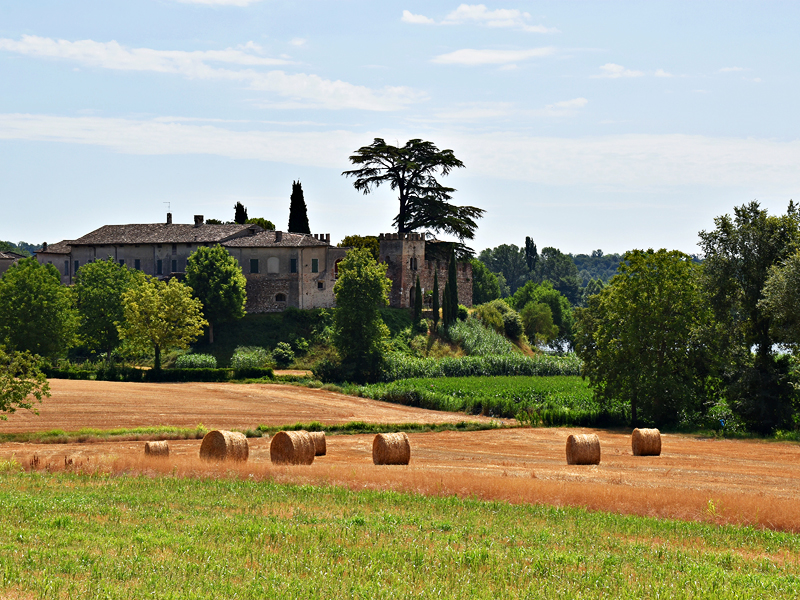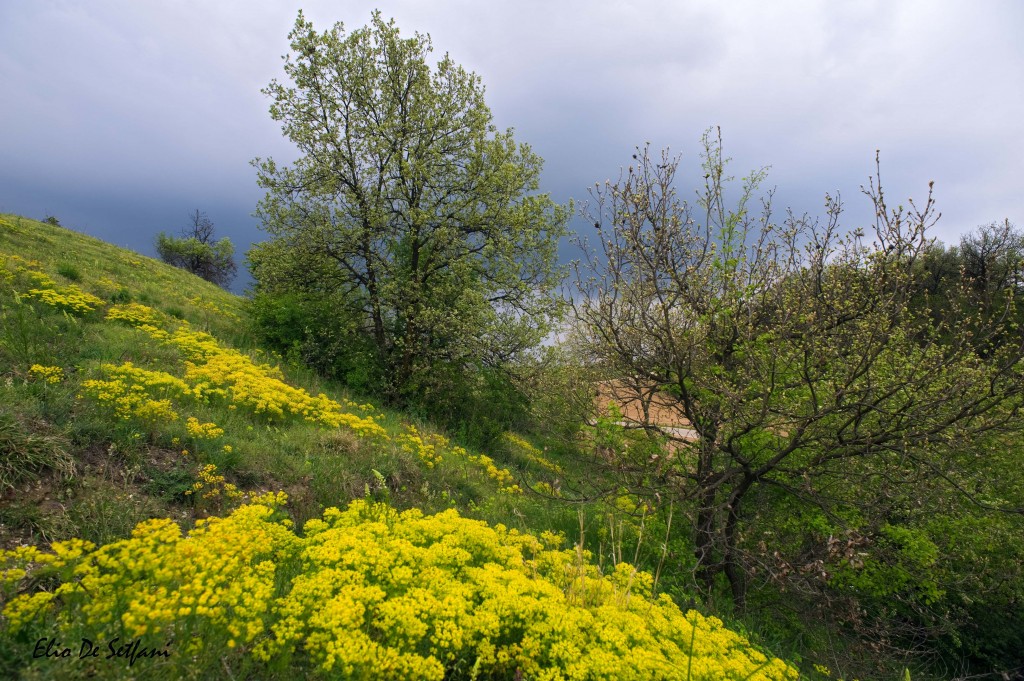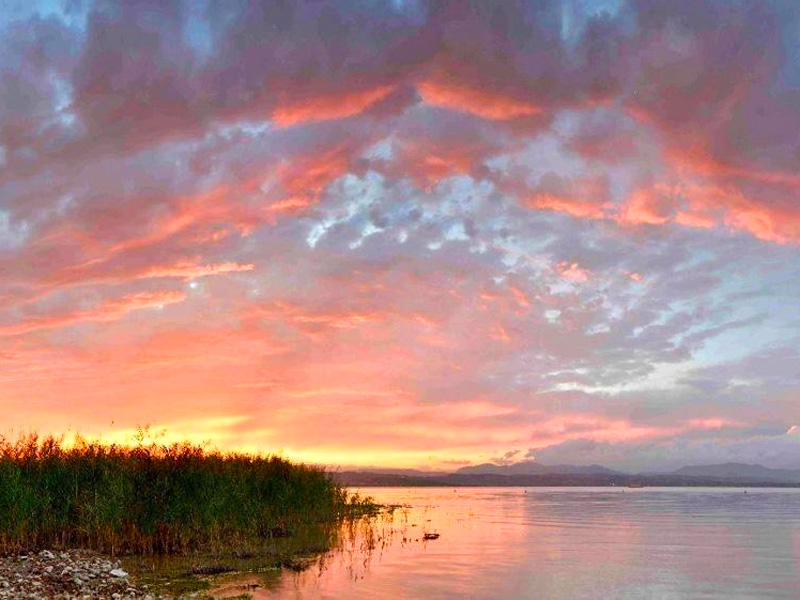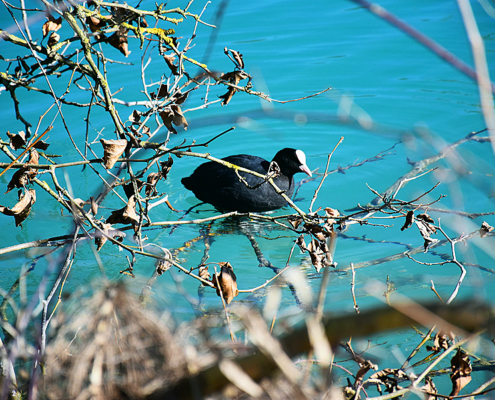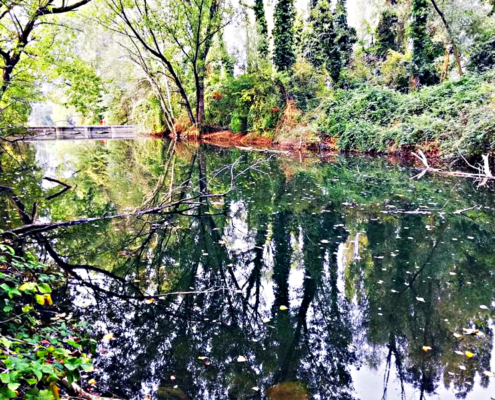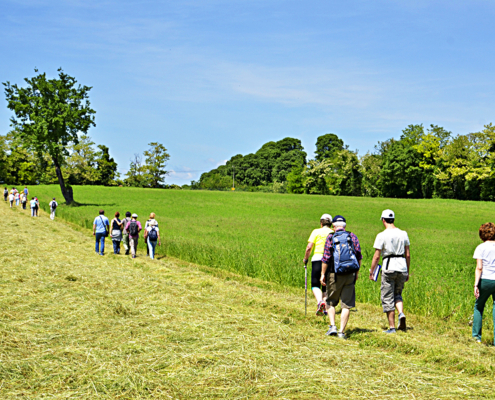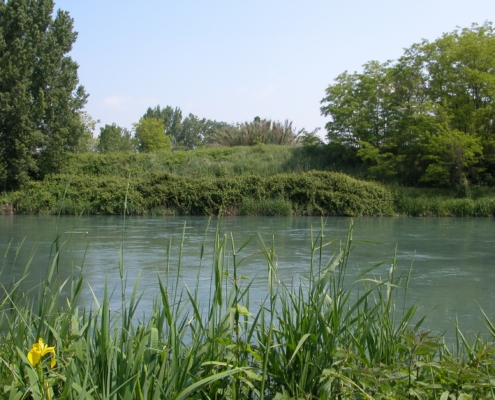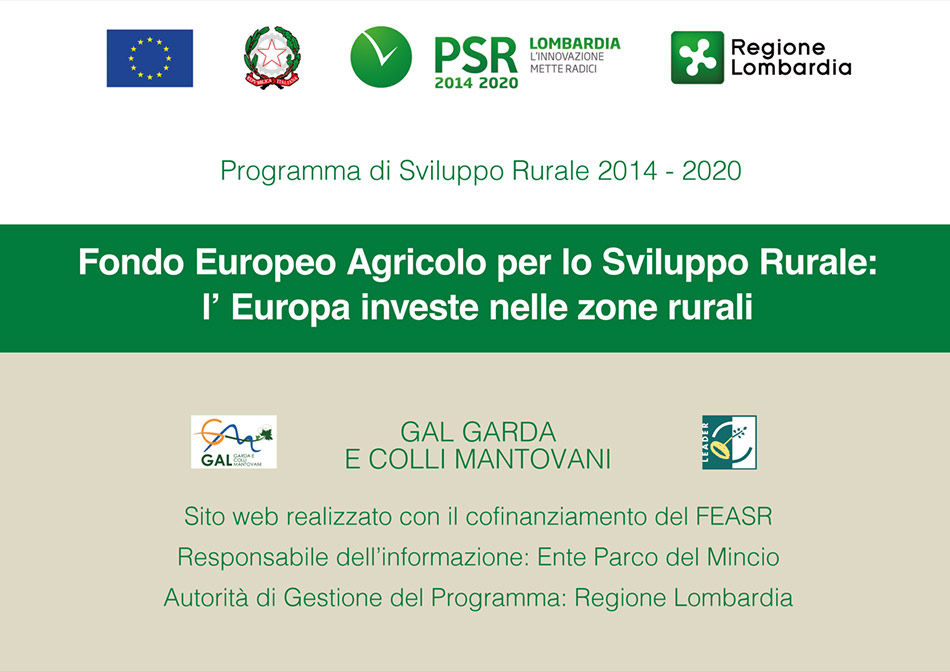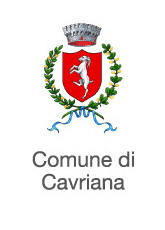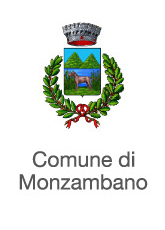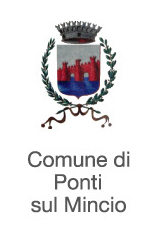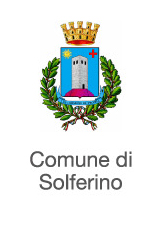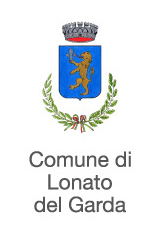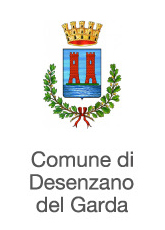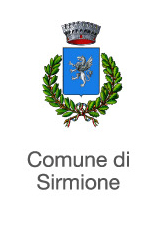![]() – Volta Mantovana
– Volta Mantovana
Natural environments
The woods
Downy oak forests are the typical formations of moraine hills. They are mixed forests of downy oak, flowering ash and black hornbeam, in which the shrub layer is also made up of flowering ash and numerous other species such as the very common privet, the canine cherry with white, fragrant flowers gathered in clusters and with bitterish fruits similar to small black cherries, juniper, the only coniferous tree that grows spontaneously and the emero, a legume that in April is covered with showy yellow flowers. Among the herbaceous species present, orchids such as the wood flower and the white helleborine are frequent, which, together with the primroses and the red lily, constitute the most prestigious flowers of these woods. In the municipality of Ponti sul Mincio, in the northernmost part, the oak forest is enriched with white hornbeam, giving rise to a decidedly rare formation in the Mantua area. In some areas, in particular, in the municipality of Castiglione delle Stiviere, oak woods grow on fresh soils, at the base of the hillsides where the water table is shallower. The most typical shrubs are the very common hawthorn which is covered with white flowers in spring, the medlar which produces edible rust-coloured fruits and the lantana. Among the herbaceous species, those typical of the cooler woods grow, such as the snowdrop whose flowering brings beautiful hanging white flowers. On the crests of the moraines, in the warmest exposures, the downy oak forest takes on the characteristics of a steppe forest, becoming sparse, with short trees and Mediterranean scrub shrubs: the marruca, thorny and with small yellow flowers that convert into a dry fruit disc-shaped, the scotano which in autumn, with its brightly colored leaves, dyes the forest red, the scrub rose with large pink flowers. The soil is covered by a continuous layer of grasses such as upright forassacus and wildflower and by the species that normally make up arid meadows.
Where the morphology improves, black hornbeam forests are established in which the shrub and herbaceous layer is similar to that of downy oak forests. The latter are very well represented in the Municipality of Cavriana. In the remaining humid areas, however, hygrophilous forests grow which, despite their small size, are of great importance from an environmental and protectionist point of view. The most significant formations are those present in the vicinity of the Castellaro Lagusello lake: it is a black alder forest with a fairly closed structure and with little coverage of the herbaceous and shrub layer and woods in which the white willow is associated with the black poplar and a few shrubs such as buckthorn and dogwood. In the Bassa dei Bonomi in Volta Mantovana there is a forest in which, in addition to species with moderate water needs such as hornbeam and turkey oak, black alder grows in the most humid areas. Locust woods are also found almost everywhere in the upper Mantua area. In the municipalities of Castiglione delle Stiviere, Monzambano, Solferino and Cavriana, there are also widespread formations dominated by hackberry trees, which developed with the help of man.
The dry meadows
The term “arid meadows” refers to the strips of natural grass on the sunny and steep slopes mainly exposed to the south of the hills. Summit points of great scenic beauty, these summits allow you to enjoy uncommon views of the ordered plain to the south and the snow-capped slopes of Monte Baldo or glimpses of Lake Garda, looking north. The great floristic biodiversity and rarity of these environments has determined their protection by the Lombardy Region, which with art. 5 of law 10/2008 prohibits its destruction and damage; the European Union has also recognized these environments as priority habitats based on EU Directive 42/93 (Habitat 6210-Semi-natural dry grasslands on calcareous substrate). Now they have a very small surface area due to the continuous pressure that man has continued to apply to them. The arid meadows take us back to an ancient aspect of the hilly landscape. On these slopes, the summer drought gives rise to conditions of marked aridity in both the atmosphere and the soil. The typical flora, extremely specialized, is made up of individuals adapted to the peculiar and difficult ecological conditions. In these strips of meadow, made up of perennial herbaceous plants dominated by grasses, some of the most interesting flowers of the Mantua moraine hills grow; the splendid blooms begin in the month of February with the snowdrops, culminate in the spring and summer months and continue until the autumn months with the various species of bluebells and asters that color these unusual slopes. The herbaceous cover is embellished with a rich presence of species of spontaneous Orchids: thirty-two species belonging to this family have been recorded, distributed among woods and meadows, of which twenty-one are linked exclusively to arid prairies. The names of the most common species of arid meadows evoke the aridity and stonyness of the places, such as the potentilla (Potentilla tabernaemontani) and the stone-breaking carnation (Petrorhagia saxifraga). In the spontaneous flora of the hilly prairies there are species that usually grow at higher altitudes, in beech or chestnut woods; among these the Pulsatilla montana, whose name clearly indicates the vegetative area, is one of the first to flower in the month of March. It is probably a flora that the glaciations, in the period of their maximum development, pushed to the Mantuan plain, and which has acclimatised here. In these extraordinary places we find, alongside the specimens of alpine flora, some Mediterranean species such as the crepwort (Eryngium amethystinum), very thorny and with a blue-violet colour, the tree heather, found only in the hills of Esenta near Castiglione delle Stiviere and, at the edge of the woods, the prickly asparagus.
Almond trees (Prunus dulcis)
The spectacle of almond trees in bloom is renewed every year in spring in Cavriana, which has become the symbolic municipality of the project to relaunch this species through the recovery of the ancient cultivation. The cultivation of almond trees on the Morainic Hills is perhaps attributable to the proximity of Lake Garda which mitigates the Po Valley climate and has over time favored the establishment in the local flora of both spontaneous and cultivated Mediterranean elements, such as the cypress (Cupressus sempervirens) , the olive tree (Olea europaea) and the caper (Capparis spinosa). A widespread tradition in the times of the Gonzaga and today almost disappeared, the cultivation of the almond tree is now relaunched in a tourist-gastronomic key: almonds are the fundamental ingredient of the cake of San Biagio, patron saint of Cavriana.
Birds
The avifauna is represented by numerous species in the woods and slopes of the Garda Morenic Hills.
Among the nesting species there are the Jay, the Wood Pigeon and the Dove, the Blackbird, the Blackcap, the Chaffinch, the Great Tit, the Blue Tit, the Flycatcher, the Tree Sparrow, the Starling, the Oriole, the Serin, the Wryneck and the Long-eared owl. The presence of the Owl, the Great Spotted Woodpecker and the Green Woodpecker is guaranteed by the numerous cavities present in the trees. The Nightingale and the Robin are the species best known for their unmistakable song. Among the Passerines there are also the Wren, the Warbler, the Chiffchaff and the Long-Tit. Some scattered pairs of Scops Owl also nest on the hills and many other birds stop in the woods during migrations or spend the winter there.
In hygrophilous woods, the Pendolino hangs its characteristic flask-shaped nest from the branches. In the humid areas, in addition to the few ducks present such as the Mallard and the Garganey, the Great Crested Grebe, one of the most beautiful birds in terms of shape, colors and behavior, the Coot, the Moorhen and the Little Grebe nest. The reed thickets at the edges of the bodies of water are home to many nests, including those of the Warbler and the Reed Warbler, which are often used by the Cuckoo to lay their eggs, and of the Little Bittern, the smallest representative of the herons. Where the reed thicket is larger, the Marsh Harrier has also attempted to reproduce. The Reed Bunting and the Wagtail nest in the few remaining humid meadows. The vertical walls favor the presence of the Bee-eater, a brightly colored bird particularly widespread in the hills, of the Kingfisher and the Little Mouse which use them for nesting.
The Hoopoe, a bird characterized by showy plumage, with bright colors observable especially during flight, is present in many sites of the Morainic Hills despite its presence being significantly decreasing in the lowland areas. Many common species also regularly frequent the cultivated countryside and among these are the Lark, the Santimpalo, the Quail, the Partridge, the Pheasant, the Crow, the Magpie and the Kestrel.
The migration of birds of prey on the Morainic Hills
The Garda Morainic Hills area is the most important location for the study of the autumn migration of diurnal birds of prey in Italy and is also proving to be one of the most important in Western Europe. The observation and monitoring activities take place in Ponti sul Mincio, at the disused chimney of the nearby thermoelectric power plant and in the ornithological station of Forte Ardietti.
Gray shrike
It represents an important and rare presence, particularly protected at European level as it is included in Annex I of the Birds Directive. In Lombardy it is located as a nesting site in very few sites, including the area south of Volta Mantovana, which therefore assumes significant importance for the species. In Italy the species is considered endangered and in Europe it is largely decreasing.
Mammals
Woodland mammals are generally very small, almost never visible. Among the micromammals there is the Common Shrew, probably the Arvonchi Forest Shrew, the Red Vole, the Yellow-necked Field Mouse, the White-bellied Crocidura, the Lesser Crocidura, the Little Mustiolo, the Dormouse, the Dormouse and the Quercino. The largest Yew is quite widespread in the woods of the Morainic Hills, where it digs its network of underground tunnels. The Hedgehog and the European Mole are also well distributed, preferring environments other than wooded areas. In the humid areas there are the Water Shrew and the similar Miller’s Water Shrew. The Weasel, the Stone Marten but, above all, the Red Fox are, however, important predators for the limitation of many species and small rodents.
The Amphibians
Present but very localized are the species of community interest, the Lataste Frog and the Dalmatian Frog, typical inhabitants of the dead leaf litter of the forest, among which they camouflage themselves. To a lesser extent, the Spotted Newt and, much rarer, the Crested Newt species of community interest are also found. In the most humid woods lives the Italian tree frog, our only “arboreal” amphibian, capable of climbing on vegetation. The Lesser Green Frog is undoubtedly the most widespread species, present in lakes, peat bogs, ditches and springs. In the hills there are two species of toads, the green toad, well represented in various environments including agricultural ones, and the common toad.
The Reptiles
The Wall Lizard is the best known and most widespread species but the Green Lizard is also well distributed. Among snakes, the grass snake is the species most linked to aquatic environments. The woods are an optimal environment for only a few species of reptiles, which however prefer the more thermophilic parts, including the Snake Snake and the rarer Saettone. There is little information on the presence of the smooth snake, a species of community interest. For the Common Viper, most of the information is unreliable: they are actually other harmless species.
Good to know


